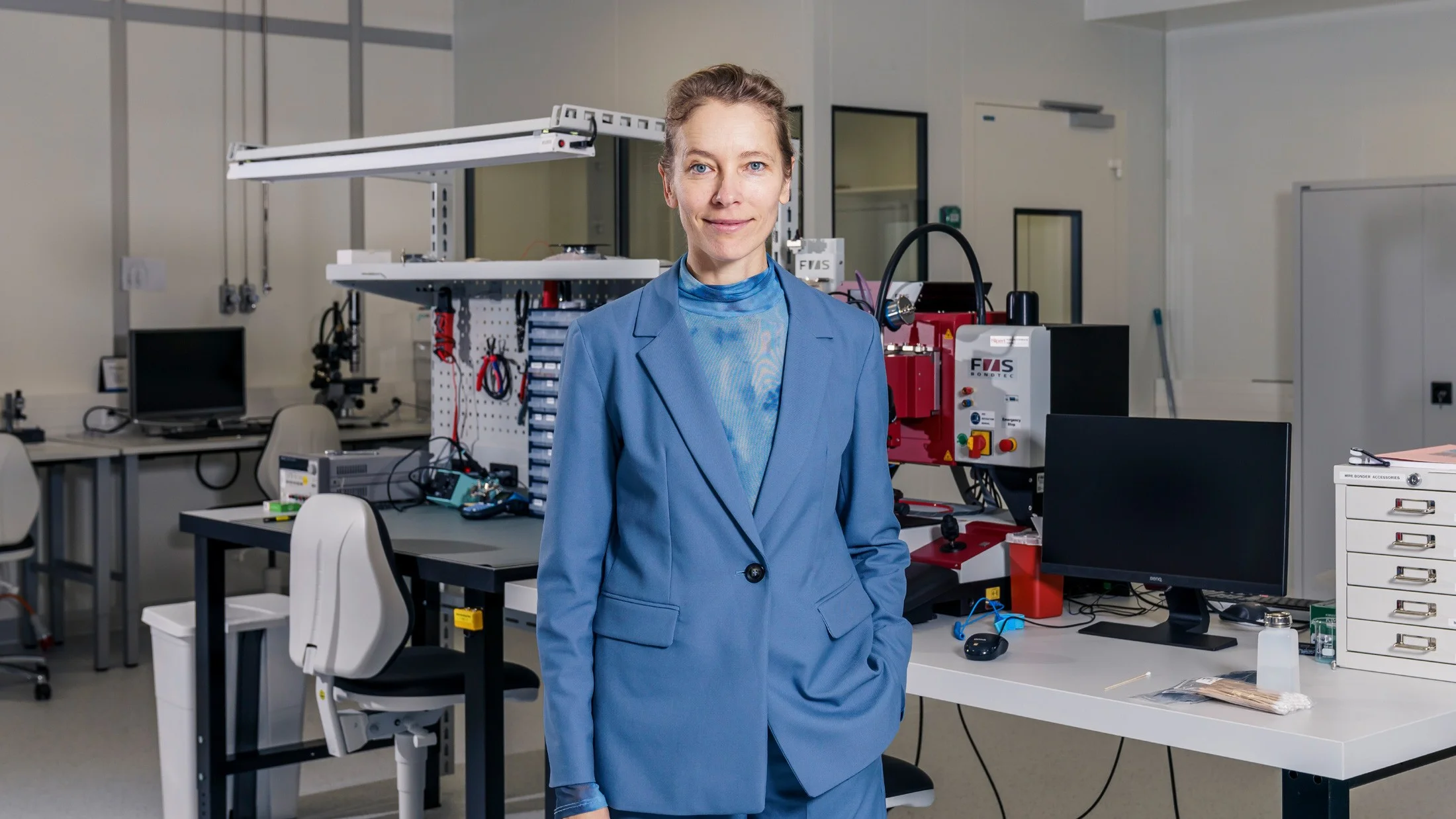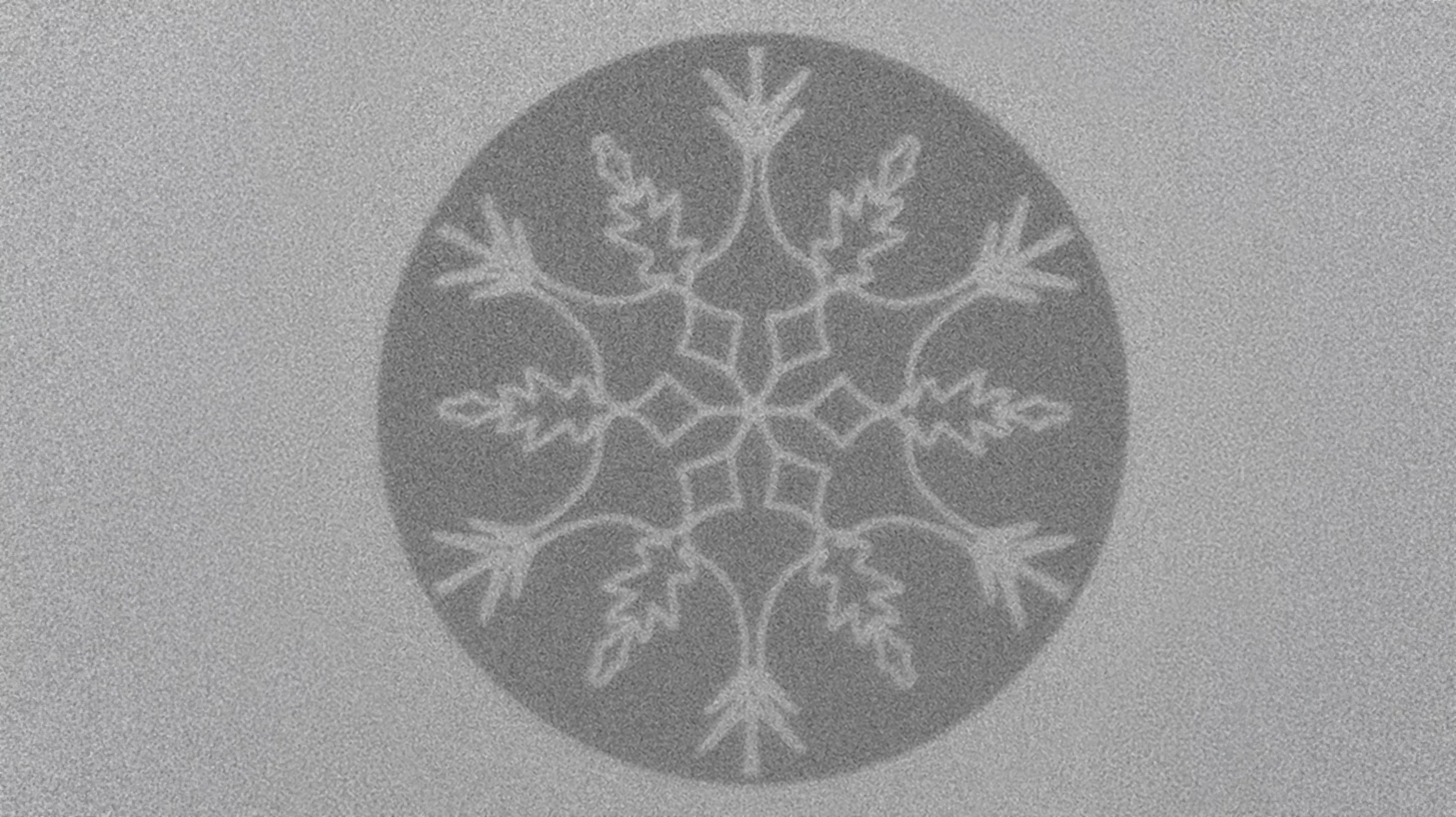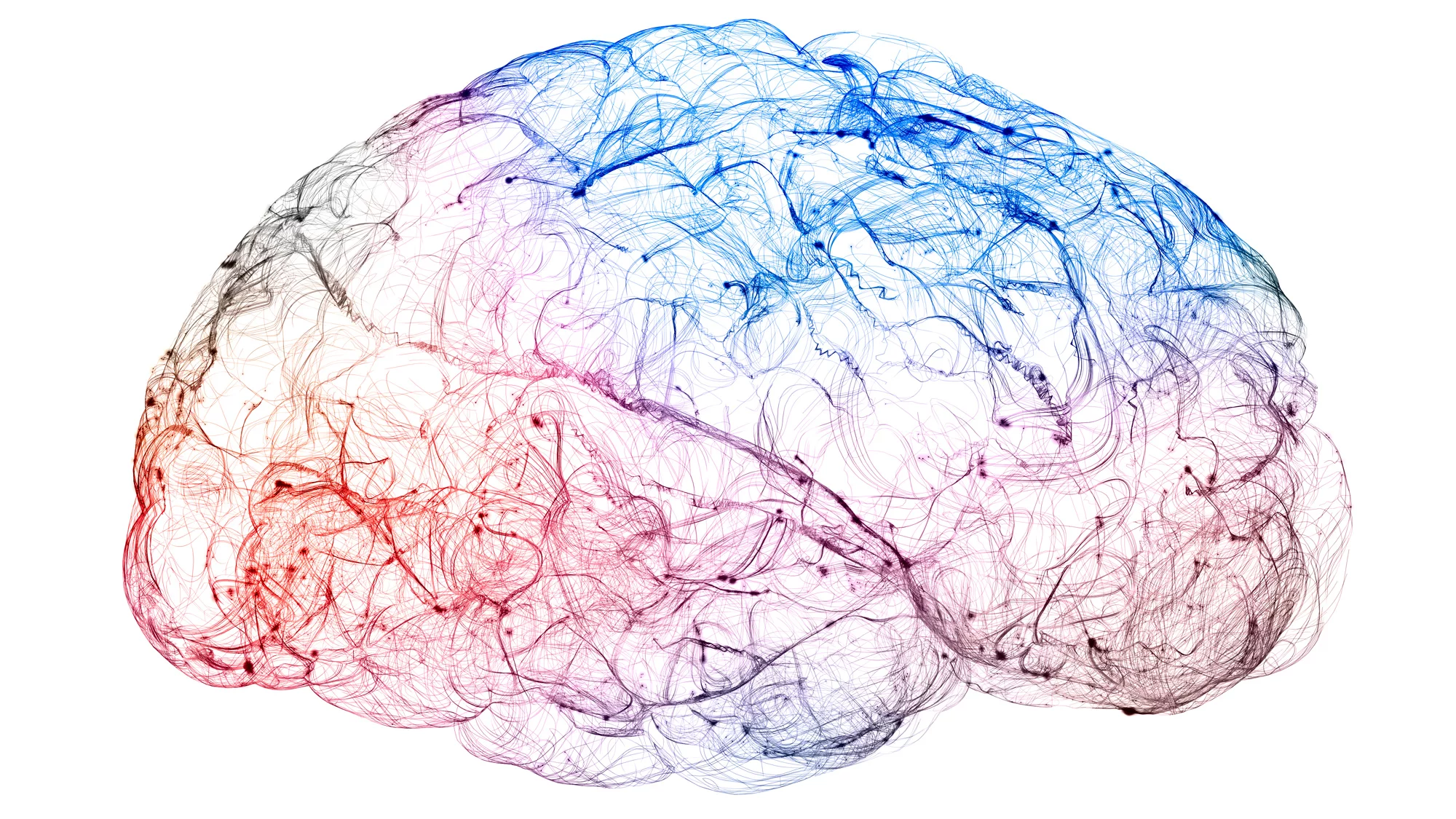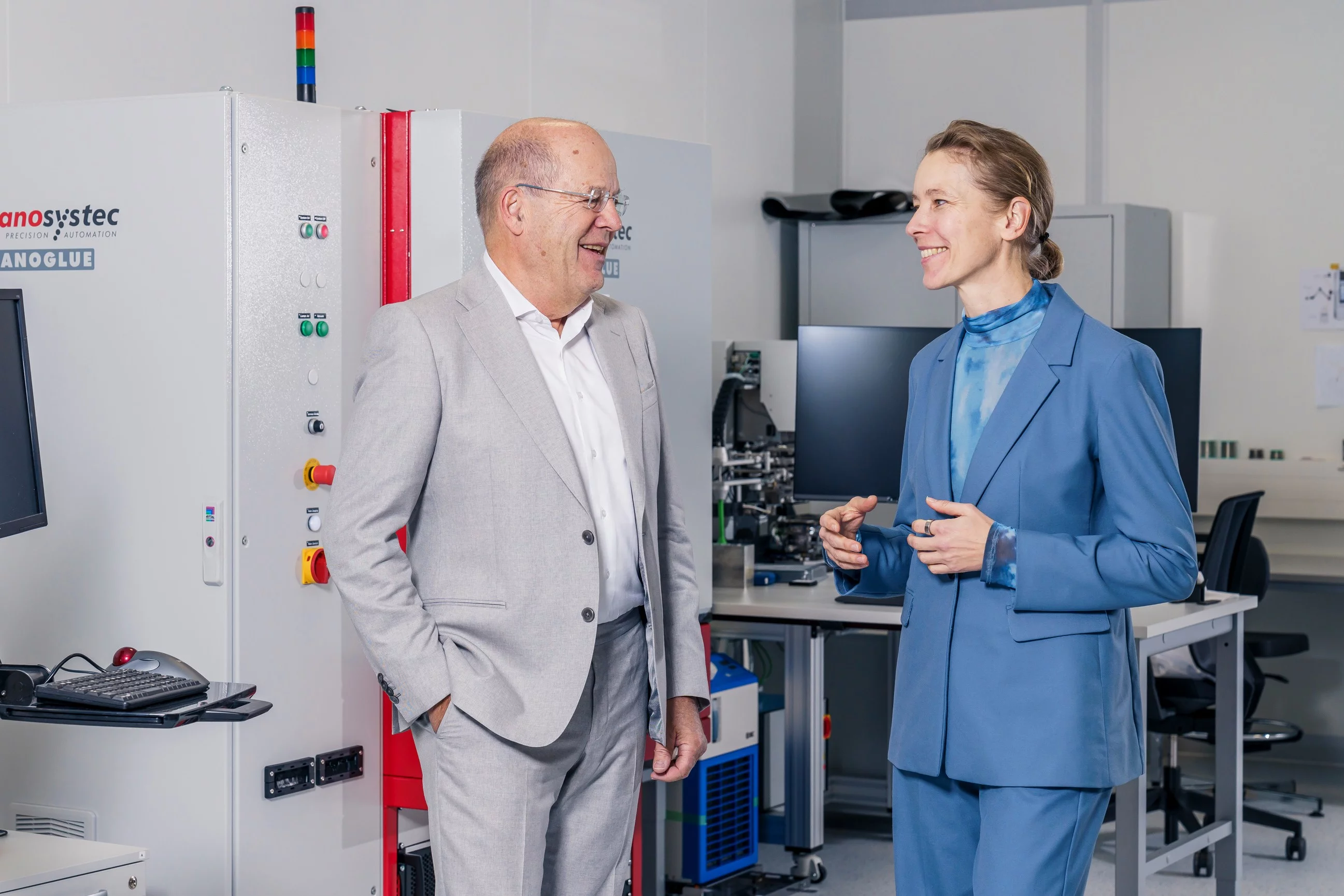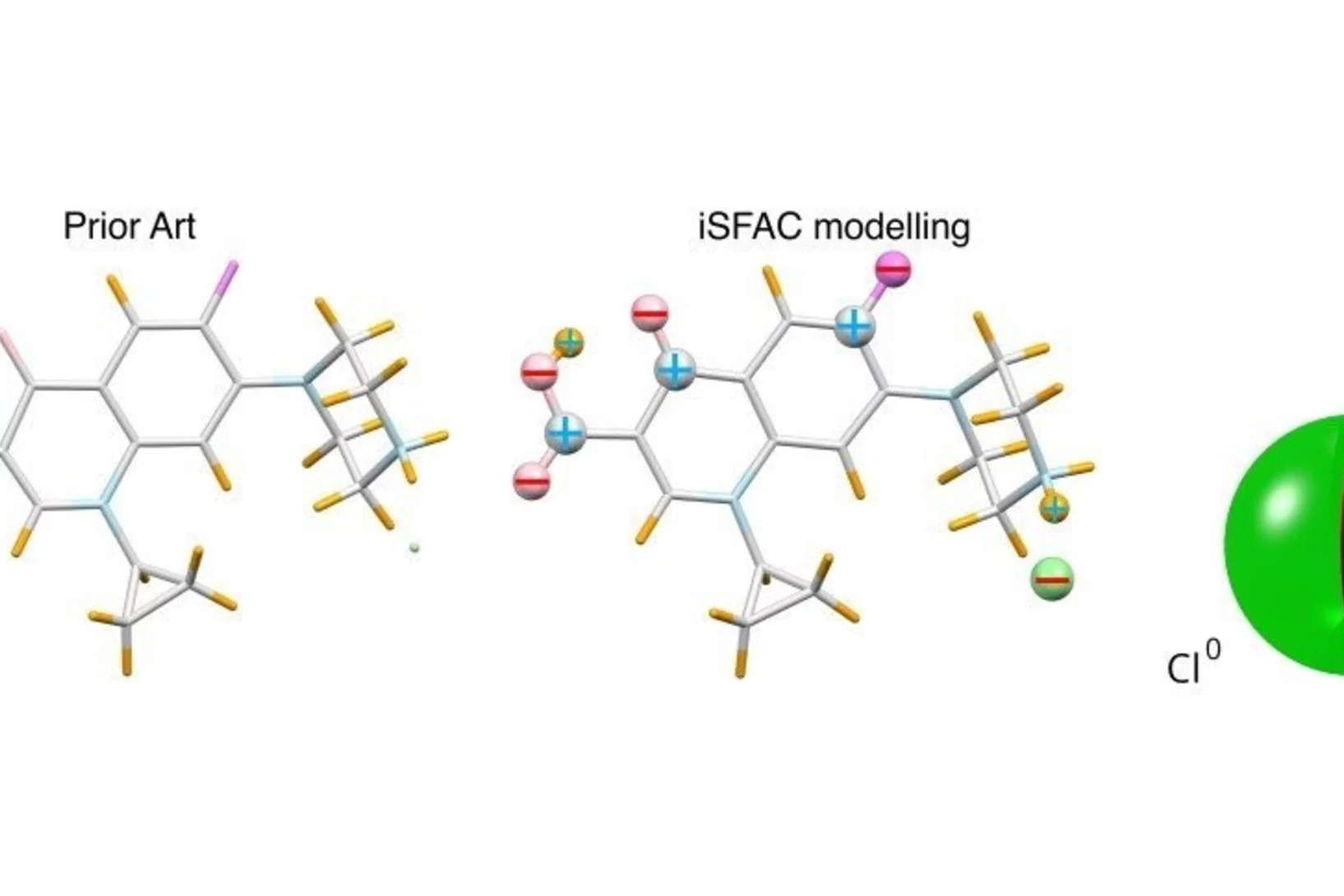The intense beams of X-ray light at the user facilities operated by the PSI Center for Photon Science shed light on the smallest structures of matter.
Lab News & Scientific Highlights
Unravelling the coexistence of insulating and metallic-like excitations in SrIrO₃
A team led by researchers from the Paul Scherrer Institute PSI used resonant inelastic X-ray scattering to probe spin and charge fluctuations in atomically engineered SrIrO₃. The results revealed that insulator-like and metallic-like modes can simultaneously emerge in a correlated 5d semimetal, advancing the understanding of “strange metal” behaviour in spin–orbit coupled systems.
Duo de terbium et autres œuvres d’art quantiques
Pour créer des bits quantiques plus stables, les scientifiques du PSI associent des ions terbium par paires. Ailleurs, ils positionnent des atomes avec précision à l’aide de pinces optiques.
Measuring How Molecules Communicate
A collaboration between PSI and the University of Vienna has resulted in a new experimental method that, for the first time, enables the direct measurement of partial charges in molecules. Partial charges are fundamental to understanding molecular structure, interactions, and reactivity, yet until now no general technique existed to determine them experimentally.


